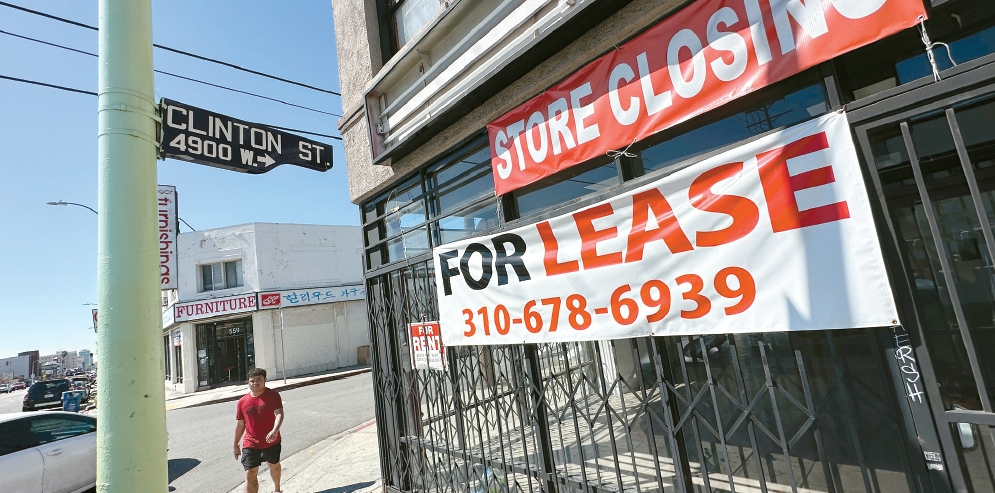Western Avenue is filling up with art galleries. But behind the revitalization of Western Avenue with art galleries are vanishing furniture stores. Art galleries are taking over the old strip full of furniture stores that were run by Korean-American immigrants.

Twenty years ago, Western and Melrose avenues were home to about 40 furniture stores, including 15 Korean-American, Vietnamese, Armenian, and Middle Eastern businesses. But after 2010, the neighborhood began to shrink in the face of the recession and the growth of online markets. Today, there are only about a dozen traditional furniture stores left in the Western and Melrose Avenue neighborhoods.
Several are listed on Google as open, but when visited, they were either closed or up for lease.
“I haven’t sold anything in the last 10 days,” said one Korean-American business owner who asked not to be identified. “With the pandemic funding being cut off, it’s really hurting business, and it’s too much for retirement-age business owners to try something new. They can’t let it go, they don’t know what to do, so they’re just holding on.”
The glitz and glamor of Western Avenue also casts a dark shadow of gentrification. “In many ways, it seems like a textbook case of the strategic use of art as a lever for real estate speculation,” Boyle Heights community activist Maga Alcazar said in an interview with the Financial Times about Western Avenue.
The revitalization of Western Avenue is expected to lead to rising rents, which will eventually push out existing tenants. This is evidenced by the disappearance of many of the once-abundant Korean signs. The color of Koreatown is also fading as English signs are filling in the gaps.
The loss of local character, along with a decrease in cultural diversity and the homogenization of commercial areas, is a typical feature of gentrification.
Some of the businesses displaying Korean-language signs were being run by non-Korean owners. “We took over from Korean owners six years ago,” said Harut Kilislian, owner of Mod Plus, a furniture store with a sign that reads ‘Furniture Love’ in Korean. “Most of the Korean owners have sold their stores and left,” he said.
The neighboring Hollywood Furniture Store was also run by a non-Korean. Currently, 101 Design and Joy Furniture are open for business.
“Actually, there is no ‘Furniture Street’ anymore. Most of the remaining furniture stores on Western have already been sold, and there will only be one or two left,” said 101 Design. “Only a few stores have survived, with regular customers.”
“The gentrification of Western Avenue furniture street is real,” said LA1 Realty agent Wolsoon Han. The (old) businesses are dying, and at the same time, Korean-American business owners are being pushed out of business.”
The decline of Furniture Street is also linked to the changing demographics of the neighborhood.
“The people who are moving into town are almost exclusively young people,” said one broker. “Young people are mostly buying (furniture) online,” said one broker, adding “Then, seniors have their families and furnished houses already and so don’t really want to move.”
“I don’t think younger people go to Koreatown furniture stores because they usually decide ahead what they want to buy online or on social media,” said Habin Lee, an LA resident.
BY SUAH JANG, KYEONGJUN KIM, HOONSIK WOO
[jang.suah@koreadaily.com, kim.kyeongjun1@koreadaily.com]





